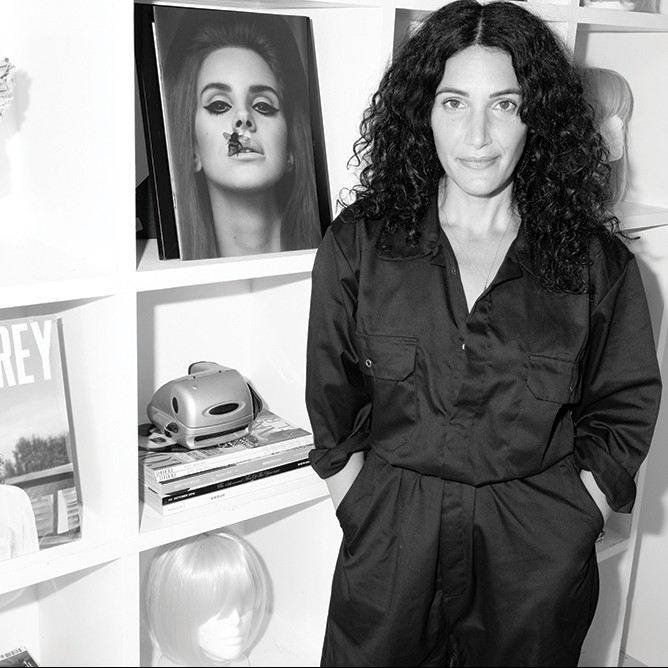Lighter nights mean one thing – it’s time to lighten your clients’ locks and keep their hair in optimum health too. Here’s how…
While it may seem cliché to talk about going lighter during the warmer months, let’s be honest, it’s inevitable. Clients are itching for a trip to the salon for a little blonde in their locks. Whether it be a balayage, full head of highlights, face-framing money piece, or a scalp bleach – as colourists, you’ll be welcoming the change with open arms. How does the saying go again? Fail to prepare, prepare to fail. Because it’s not just about a quick colour fix anymore thanks to the ‘skinification’ of hair and the surge of social media searches into scalp and haircare – it’s about treating the hair how you would treat your skin. So, with that in mind, we went to the biggest colour brands to discuss those lighter transformations, what you need to prioritise, and the importance of managing client expectations.
Why Are Colour Consultations Important When Preparing for Lighter Transformations?
As you’ll already know, no transformation is the same. Hair type, hair colour, hair health – these are just some of the things you have to take into consideration when it comes to colour transformations. “Open conversations are key to understanding what your client is asking for,” Layla Smith, Platinum Educator at KEVIN.MURPHY, tells us. “We all perceive colour differently and describe it in various ways. Taking the time to understand each other’s ‘colour language’ can make all the difference in achieving the desired results.” Plus, when dealing with lighter transformations, you’re going to want optimum hair health.
Putting it simply, the consultation is where the in-depth conversations happen. As Claire Palmer, Goldwell Education Strategy Coordinator says: “A consultation shouldn’t just happen for the first 5-10 minutes of the service.” And as a colourist, especially working with lighter transformations, you need to ensure you check off your priorities. From discussing hair type, treatment benefits, colour techniques, the consultation is the key to getting those clients to return. And thinking in realistic terms is a great place to start. “Can the colour be done in the time frame we have? What is the condition of the hair? How much budget does the client have? These are all great factors to consider, but having the hair’s condition in mind with lighter transformations is always crucial,” says Daniel Granger, Schwarzkopf Professional UK Ambassador. “I will always ensure to lighten my client’s hair gently to prevent damage and keep the hair’s integrity.” Likewise, Georgia Bell, Quif Ambassador, tells us: “If the integrity, condition and porosity of the hair isn’t there, then my colour work is not going to look as good.” Which is why, Tia Lambourne, Danger Jones Global Ambassador highlights: “If the hair is not healthy, we need to work on bringing the hair to a better state before we go in with the lightening service.” Jo Robertson, Eleven Australia UK Education Director, tells us: “Sometimes, it's beneficial to improve the hair's health with an at-home haircare plan first. This approach not only provides a better base for the transformation but also helps gauge the client's commitment.”

But it’s also about whether the scalp is in a healthy enough condition for a lightening service. “We assess the scalp to ensure it can handle bleaching without irritation or harm,” says Joe Hill, Aveda International Technical Capability Manager. “Every client’s hair reacts differently to lightening so I discuss the best techniques for their hair.” Jamie Benny, ALFAPARF Milano Professional Guest Artist agrees, stating: “Once you have analysed the hair, then you can take the next steps in knowing how many shades to your desired result.”
Tone longevity, though, is something Tom Smith, evo international creative colour director, prioritises. “To maintain tone as long as possible, the evo fab pro system is a unique and adaptable take-home pigmented conditioner system which tops up tones to keep things salon fresh – essential after a big lightening transformation.”
Moreover, it’s a good idea to factor in trend talk. “Giving the client insight into what you’re planning for seasonal trends as well as exposing them to trends before they hit the mainstream, will show your client how seriously you are about their hair,” say Gareth Williams, Moroccanoil Global Ambassador.
But it’s the suitability for the client that’s equally important. “Any references you can use to support the wow factor and how you can achieve it will help the client relate to the end result better,” Christel Barron-Hough, Wella Guest Artist and founder of STIL Salon, tells us. “Tuning in to what the client likes is super important as references of models, celebrities or clients can be chosen to suit their personal style.” Not only that, but you also need to tune in to what they don’t like. “Dependent on how big of a transformation, you need to get through those hates to get to the loves,” Edward Taylor at Jungle Fever UK tell us.
Here's some top tips on creating the perfect hair colour base...
Why Regular Appointment Scheduling is Beneficial for Colour Transformations
Perhaps something that you do second nature with colour clients, is scheduling in their next appointment before they leave the salon. But if not, let’s talk regular appointment scheduling and why they’re hugely beneficial. “This approach allows us to map out the journey toward the desired result,” says Joe. “It helps us focus on hair health by incorporating treatments and rest periods.” And it’s something Victoria Panting for Paul Mitchell opts for: “I aim to map out a full year of services with my clients, building in appointments for glossing, treatments, and touch-ups to ensure their colour stays looking fresh and their hair remains healthy,” she tells us. That’s a year’s worth of expected income!
What’s more, Joana Merêncio, Andreia Professional Technical Hair Trainer, shares that from a professional perspective, a schedule helps manage time more effectively and focus on the client without interruptions. “This not only enhances the overall experience for everyone but maintains better control over salon management by estimating the products we need, giving us time to prepare in advance, reducing waste and optimising the salon’s profitability.”
But most importantly, you want them to return to the chair. “It’s a great way to keep your clients loyal – nobody else is going to know their colour journey like you,” says Gareth. Plus, according to Marlon Hawkins, Artistic Director at Brooks & Brooks for L’Oréal Professionnel Paris, it gets them excited about their next visit. Not only that, Daniel states how you’re also managing expectations by providing them with the length of time it might take to achieve their dream colour. As we know, most clients don’t have realistic expectations about what their hair takes to maintain. “It’s part of our job to educate our clients,” explains Hayley Penny, Yellow Professional Educator. “Without giving a full science lesson, my clients appreciate when I share my knowledge about the hair’s structure – explaining what lightening products actually do to the hair.”
Here's how glossing treatments can boost your business...

Why You Should Remain Honest and Transparent with Clients During Colour Transformations
And it’s this transparency that builds a solid trust. “I will always be upfront and honest if I have any concerns about lifting or achieving the goal colour,” says Amy woods, Orla Salon, for Directions. “I will keep my clients informed throughout each stage.” Similarly, Dan Spiller, JOICO EMEA Colour Ambassador explains: “Regular check-ins throughout the session help ensure clients are comfortable and know exactly what’s going on so there are no surprises. I believe in transparency, so they understand both the possibilities and the limitation of the service.” Besides, clients need to know what comes with a lightening service. “I never beat around the bush, and I never say pre-lightener instead of bleach,” says Sophia Hilton for Crazy Color. “They need to know that bleach deteriorates hair, no sugar-coating. But they also need to know that you have carefully chosen the best products for the best possible results for their hair.”
It also ensures you maintain a good relationship with your client, Kelly Shone-Adams, OSMO Technical Advisor, tells us. “Being honest about what can be achieved, in what time scale, and within their budget, needs to be discussed,” she says. Something that Holly Bullock, NXT Brand Ambassador, likes to do is show photos of a previous similar transformation: “It’s useful to demonstrate each stage of the transformation,” she says.
Similarly, Nicholas James Tucker, Elgon Ambassador shares: “As we know each client is different depending on the natural level of hair and the thickness and density – I advise products to help contain healthy hair during the lightening process and advise on the proposed aftercare.” Something that Shu-Lan Cheung, FFØR Technical Educator, agrees with. “Let them know how much or how little heat can be used in between appointments too,” she adds. After all, as social media searches for haircare only increase, recommending the right products and aftercare after lightening treatments, is just another way for you to earn you a few extra pennies. “I have found a move towards prioritising aftercare after a transformation,” Emma Simmons, UKI Revlon Professional Creative Artist tells us. “Clients are loving personalised solutions tailored to their individual needs.”
And now we're in the warmer months, how does the saying go again? Fail to prepare, prepare to fail…




